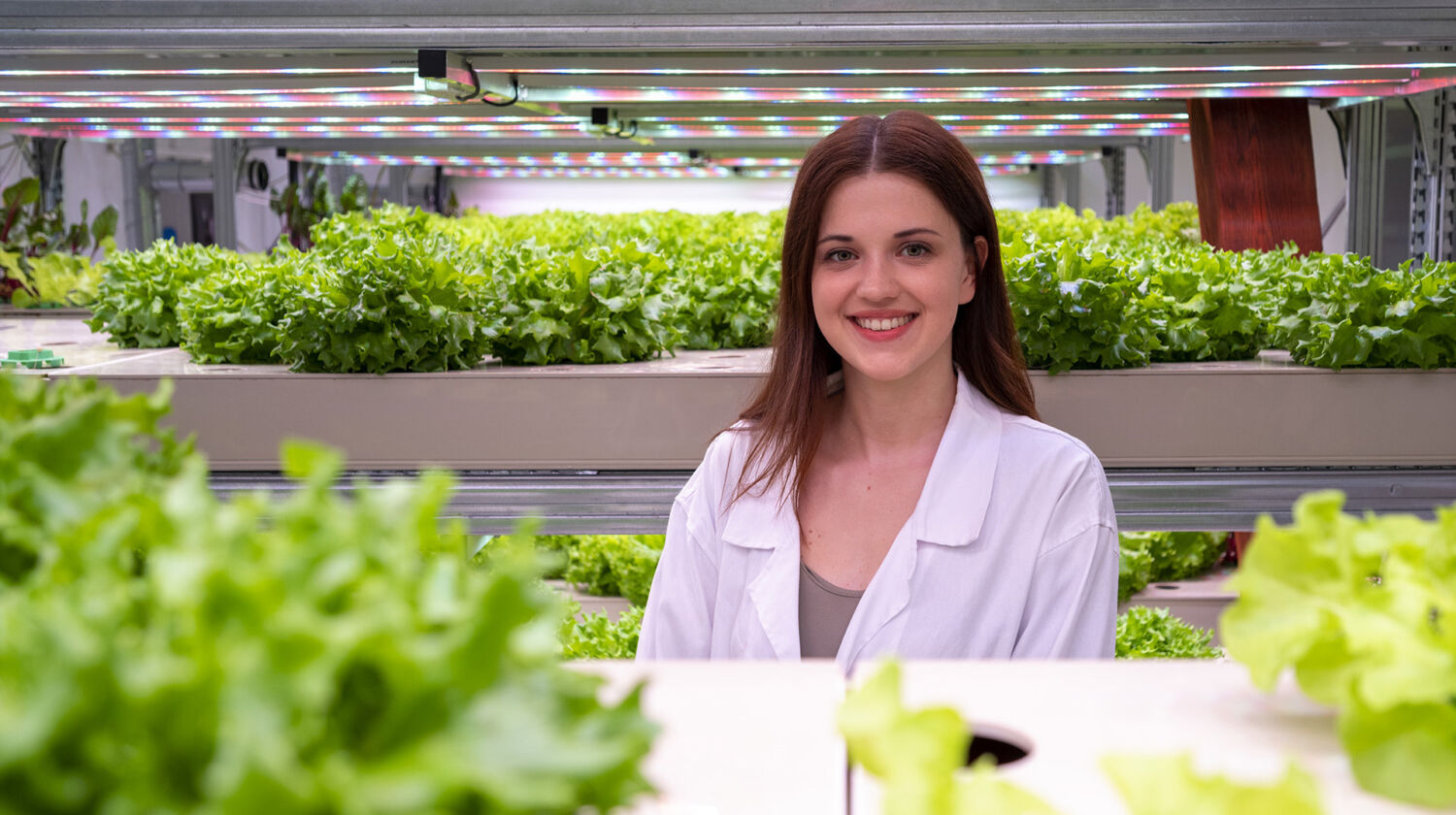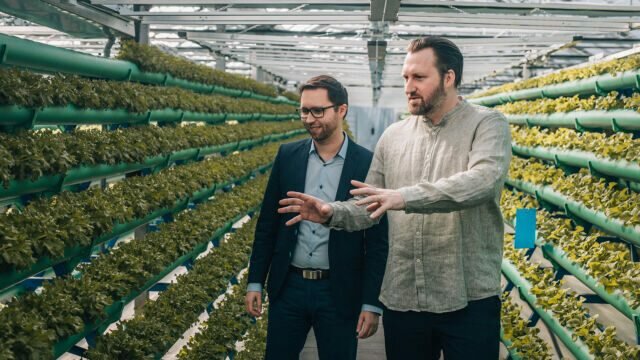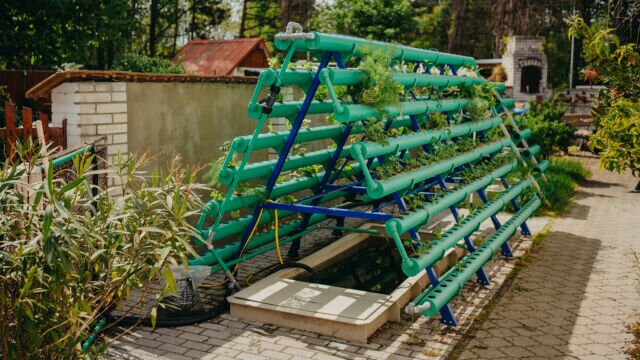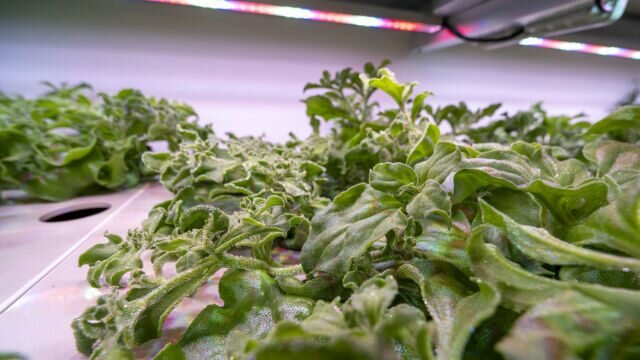“Optimization of Plant Nutrition in Aquaponics: The Impact of Trichoderma harzianum and Bacillus mojavensis on Lettuce and Basil Yield and Mineral Status”. This is the full title of the scientific experiment of Ing. et Ing. Kateřina Patloková, Head of Research and Development at Future Farming, who collaborated on the project with Prof. Ing. Robert Pokluda, Ph.D., Vice-Rector of Mendel University in Brno and Head of the Institute of Vegetable and Floriculture of the Faculty of Horticulture (Lednice).
The aim of this scientific study was to test the effect of nutrient solution with the addition of microbial inoculum on the growth and mineral composition of leaf lettuce varieties ‘Hilbert’ and ‘Barlach’ as well as basil grown at our research and production farm in Kaly using DWC technology – vertical solution.
These crops were grown in four different nutrient solution variants:
- hydroponic (Numazon fertilizer, control variant),
- aquaponic, derived from a recirculating aquaculture system (RAS) with rainbow trout,
- aquaponic, treated with Trichoderma harzianum,
- aquaponic treated with Bacillus mojavensis.
The benefit of inoculation with Trichoderma harzianum was most evident in basil, where a significantly higher number of leaves (by about 45%), higher nitrate content (by about 36%) and increased vitamin C content (by 126%) were found compared to the aquaponic variant without inoculum. Inoculation with Trichoderma harzianum can therefore be recommended for growing basil in nitrogen-limited conditions.
Bacillus mojavensis caused a higher rate of sodium and chloride removal from the nutrient solution (243% and 254% higher compared to the aquaponic solution). This is desirable in aquaponics because these ions can accumulate in the system solution. B. mojavensis also increased leaf number in all crops (by 45 to 83%) and vitamin C content in basil and Hilbert lettuce (by 168% and 45%, respectively) compared to the aquaponic solution. The inocula of both microbial species used did not have a significant effect on crop yield or biofilter activity. Nutrient levels in nutrient solutions derived from RAS are usually suboptimal or in a form that is unavailable to plants; thus, there is a need to maximize their utilization. These findings may help reduce the level of supplemental mineral fertilizer needed in aquaponics.
Expert study K. Patloková was published in English in the international scientific peer-reviewed e-journal Plants, which is published online by MDPI. Since 1996, it has supported the open exchange of scientific information in all forms and across all disciplines.
Here you can read the full study Optimization of Plant Nutrition in Aquaponics: The Impact of Trichoderma harzianum and Bacillus mojavensis on Lettuce and Basil Yield and Mineral Status.

















